|
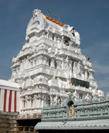 |
The Kalahateeswara Temple
Sri Kalahasti, Andhra Pradesh, India |
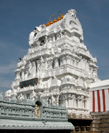 |
|
Vayu - wind/air
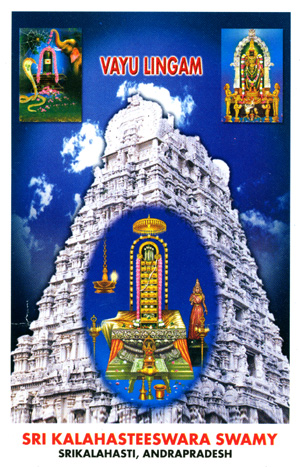
In the Kalahasteeswara Temple
Lord Shiva takes the form of Vayu -
air,
one of the five elements, everything in nature comprises of
according to Hindu philosophy.
The
Kalahasteeswara Temple is one of the most famous Shiva temples in
South India. It is situated 36 km from
Tirupati, AP.
The
Kalahasteeswara Temple is said to be the site where Kannappa Nayanar, one
of the 63 Saivite saints, was ready to offer both his eyes to cover
blood flowing from a Shiva Lingam at the same spot. Lord Shiva
stopped him and granted him mukti, because he had shown an
unshakable devotion.
Kannappa Nayanar was born in a hunting family near Sri Kalahasti. He was a staunch devotee of the Vayu Linga
of Sri Kalahasti which he found in the forest while hunting.
"There is a lamp inside the inner
sanctum that is constantly flickering despite the air movement
inside. The air linga cann be observed to move even when the priests
close off the entrance to the main deity room, which does not have
any windows. One can see the flames on several ghee lamps flicker as
if blown by air. The linga is white and considered Swayambhu, or
self-manifested."
The main linga is untouches by human
hands, even the priests. Abisheka (bathing) is done by pouring a
mixture of water, milck, camphor and panchamrita. Sandal paste,
flowers and the sacred thread are offered to the utsava-murti
(procession or replacement idol), not the main linga.
Kannappa Nayanar:
http://en.wikipedia.org/wiki/Kannappa_Nayanar
The 63 Nayanars:
http://en.wikipedia.org/wiki/Nayanars
For more information about the temple
and the legends, see also:
http://en.wikipedia.org/wiki/Srikalahasti_Temple |
|
|
The Gopuram
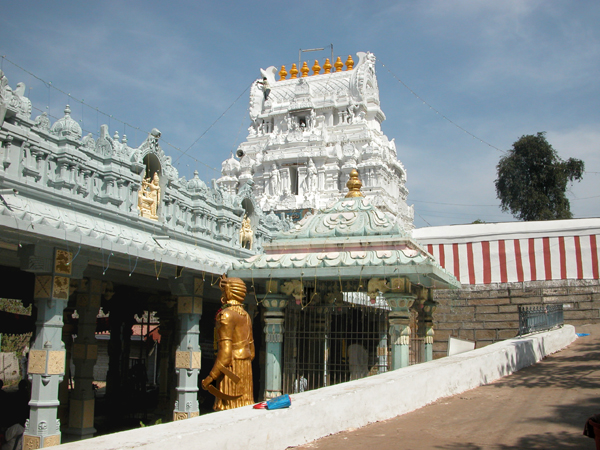
The Gopura over the main shrine with
the sacred Vayu Linga
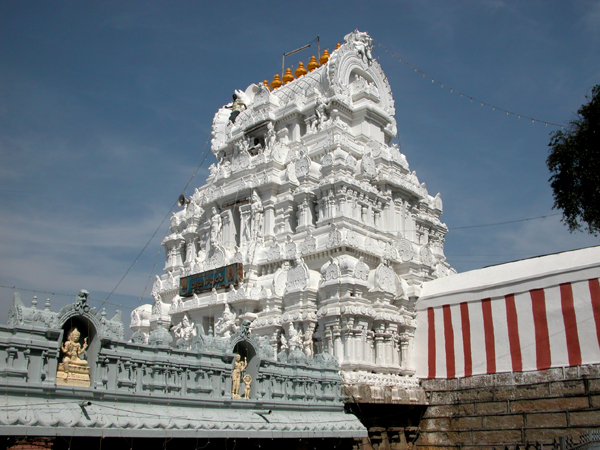
Closer view og the amazing stucco
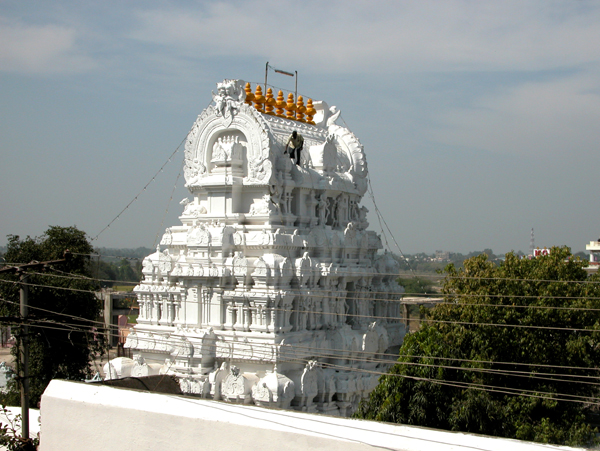
The templetop is being cleaned
|
|
|
The Five elemental
Shiva Temples
in South-East India |
Abroad
it is less known to the public that 5 magnificent Shiva temples
dedicated to the 5 natural elements:
ether (Akasha), air (Vayu), fire (Thejo), water (Jala) & earth (Pridhvi),
is situated in the eastern part of South India:
The southernmost temple in Tiruvannaikaival, near
Tiruchirapalli is apx. 350 km from Chennai, the capital of Tamil
Nadu. From south going north the other Panch Bhoota Sthalams can be
found in: Chidambaram, Tiruvannamalai, Kanchipuram and barely 100km north-west of Chennai
in Andhra Pradesh the Sri Kalahasti
Temple is situated.
The
five
natural elements - the "Pancha Bhootas"
is a central and most important concept in Indian philosophy and
tradition.
In Hindu faith it is beleived that these five essential elements
created man and the universe.
Lord Shiva, one of the
three main Gods in the Hindu Trinity of Brahma, Vishnu and Shiva, is
represented in these temples as the embodiment of these five
primary elements.
|
In the Ekambareswara Temple the Shiva Linga is made of earth.
In
Jambukeswara Temple Lord Shiva takes the form of water and the Linga
here is immersed in water.
In the Arunachaleswara Temple Shiva takes
form as fire.
In the Kaahateeswara Temple Shiva is representing wind or air.
Last, but not least in the Nataraja Temple Lord Shiva takes the form
of ether, the most sacred of the five elements. |
The Vedic rituals
performed in the numerous Hindu temples all over India has been
worshipping the Gods using the natural elements in every ritual
performed since time immemorial.
Acess for foreigners
These days it is difficult to
enter into the Sanctum Sanctorum to see the Shiva Lingam and thereby get the darshan of Lord Shiva. The
atmosphere in these magnificent temples is soothing to the heart and
just visiting the temple compound itself is a divine experience.
No photos exists of the Shiva idols inside, only
paintings are allowed. |
|
The 5 Shiva
temples are as follows: |
Sri Ekambeswara Swamy Temple,
Kanchipuram, Tamil Nadu - representing the earth element
Sri Jambukareswara Swamy Temple,
Thiruvanaikaival, Tamil Nadu - representing the water element
Sri Arunachaleswara Swamy Temple,
Thiruvannamalai, Tamil Nadu - representing the fire element
Sri Kalahasteeswara Swamy Temple,
Sri Kalahasti, Tamil Nadu - representing the wind element
Sri Nataraja Swamy Temple,
Chidambaram, Tamil Nadu - representing the ether (Akasha) element |
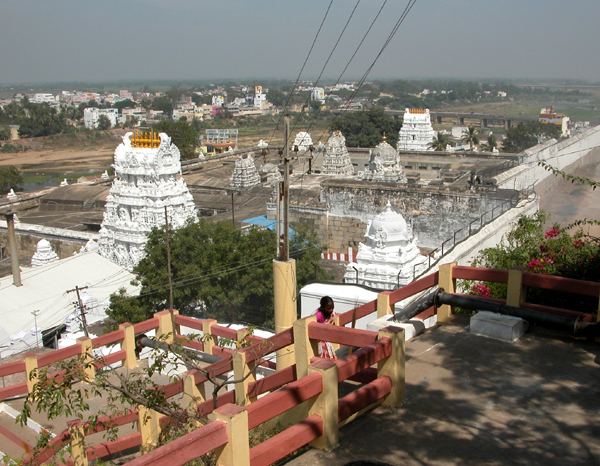
The
Kalahhasteeswara Shiva Temple
|
The Kalateeswara
Shiva Temple |
|
Between two steep hills where the
Swarnamukhi river flows by, the huge Sri Kalahasti temple complex
are situated. It
is one of the most famous Shiva temples in
South India and one of the most important pilgrimage centers in
Andhra Pradesh.
Dominating one end of the mainstreet is a 36,5 meter high free
standing Gopura erected in 1516. Nearby, similar but smaller Gopras
provide access to the Kalahhasteeswara Temple - the towns main
attraction.
The doorway to the south leads into a crowded enclosure of columned
halls, pavillions, colonades, alters and corridors.
In the north corridor are a set of bronces of the 63 Nayanar
saints.
The inner sanctum opening to the west, enshrines the Vayu Linga
Effective Pujas
Worshippers have long travelled to
this temple to seek relief from the "evil effects" of the planet
Saturn. Others come with unmarried daughters in the hope that a
special Puja at the temple will help them to find a good husband.
Sri Kalateeswara Swamy Temple is
repted as the Rahu Kethu Ksetra. Here the most effective Pujas are
performed. Doshas get removed and desired results occur.
Official website
http://www.srikalahastiswaraswamy.webs.com
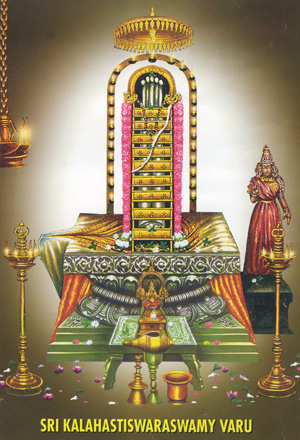 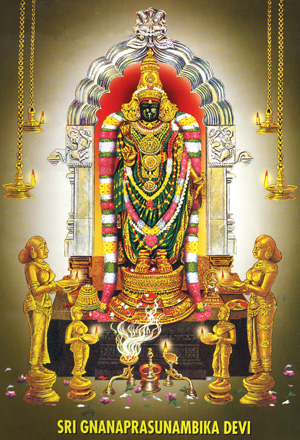
Sri Kalahastiwara Swamy and His
consort Sri Gnanaprasunambika Devi
The Vayu Linga, one of the five elemental Lingas of Lord Shiva is a
curiously elongated linga protected by a cobra hood made of brass.
A Sri Kalahasti legend
According to a local legend, a spider, a cobra and an elephant
worshipped the linga in their own special way. The spider first spun
a web around it to protect it from the sun's rays. When the cobra
saw the shrine, he got so upset to see the linga covered with dirty
cobwebs. He cleaned and covered it with little stones. The last to
arrive was the elephant, who removed the stones and cobweb and
decorated the linga with flowers.
This continued for some time until the three devotees, each sure
that his way of worship was the purest and that the others had
comitted sacriledge, desided to confront each other.
In the fight that ensured, they collapsed and Lord Shiva, pleased by
their devotion, blessed them and named the shrine after them - Sri
(spider), Kala (cobra) and Hasti (elephant).
He also gives Moksha to all three for their selfless devotion.
Several other legends are connected
to the glorification of this important temple. |
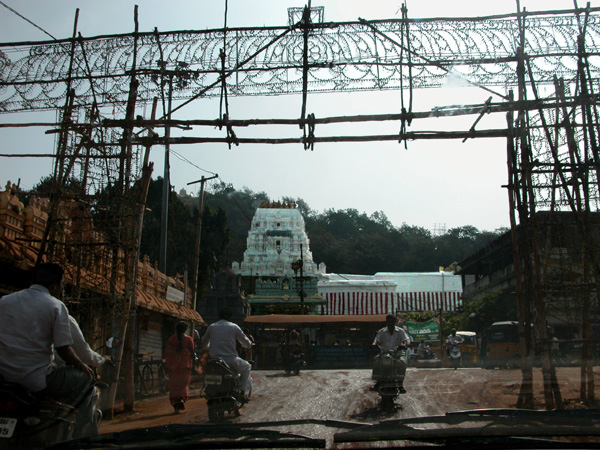
Arriving at the
Kalateeswara Temple
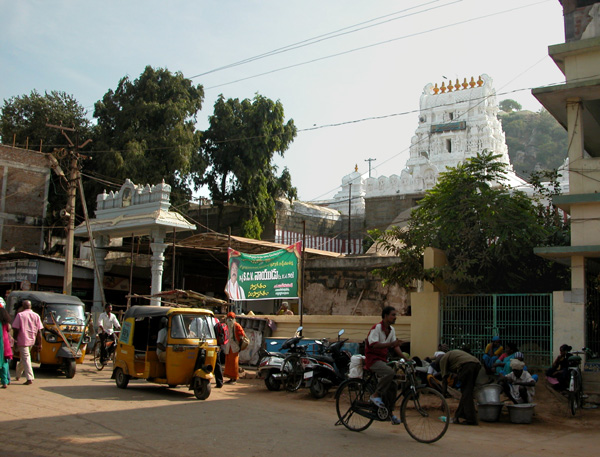
After a long journey you have reached the right place ...
|
Inside the
temple compound |
|
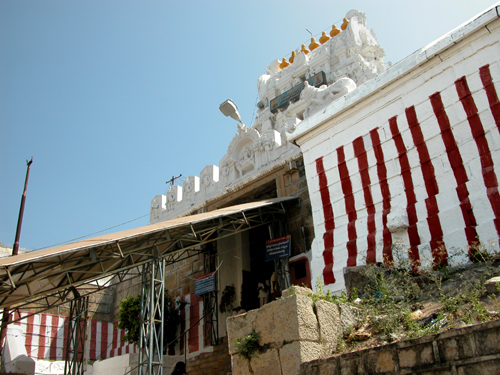
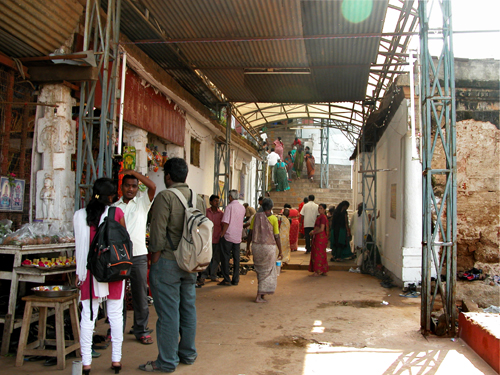
The entrance with vendors selling
gifts for the deities
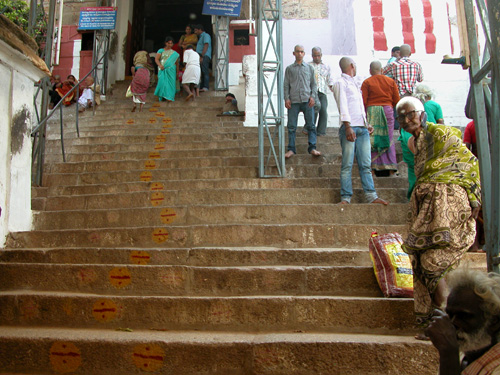
The first steps of many as the Kalahaateswara Temple
is situated on a mountaintop

Large collection of Naga Murtis to the right of the entrance
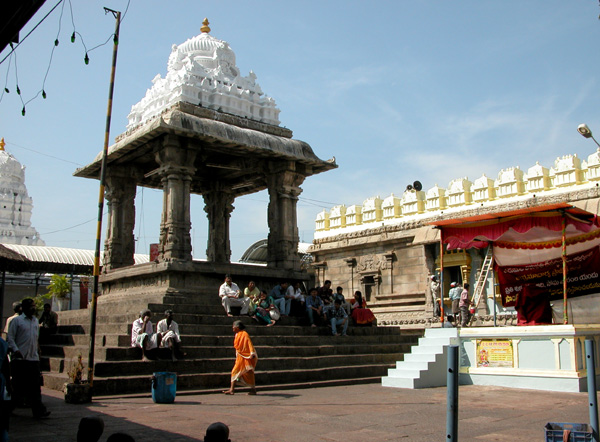
Mantapa used for festivals
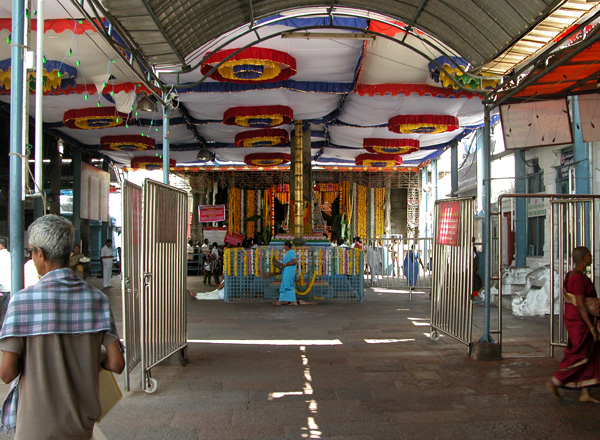
Main entrance to the Vayu linga shrine.
From here you can, as a foreigner or non-hindu, go no further
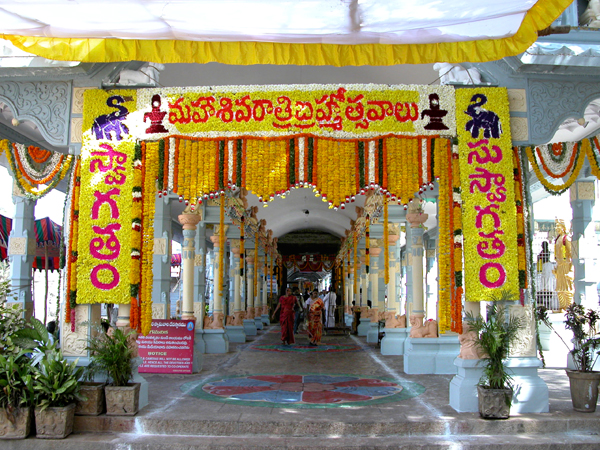
Flower decorated collonade

Work in progress on the beautifully
kept Gopuram sheltering the Vayu Linga

Going up hill

Do not miss the chance to go up hill.
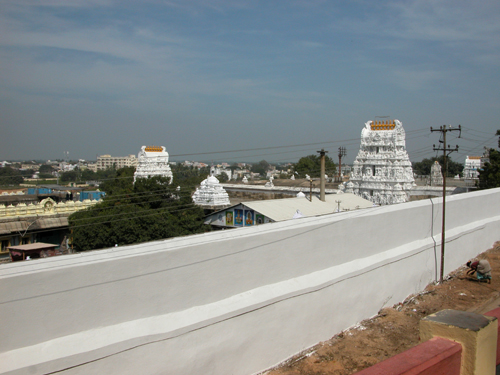
Here you have the most amazing view
over the temple,
the compound and the city itself.
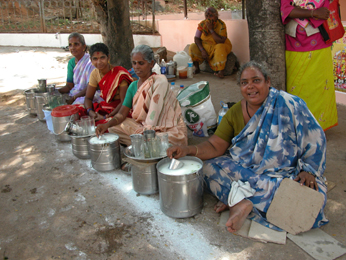 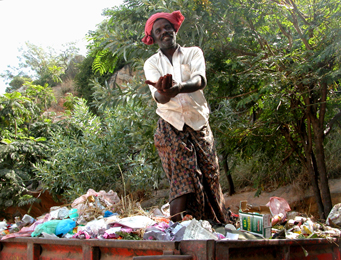
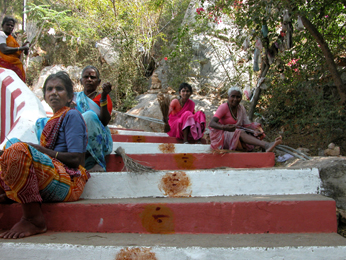
Busy people all the way up, sweeping,
cleaning, selling milck, begging etc.
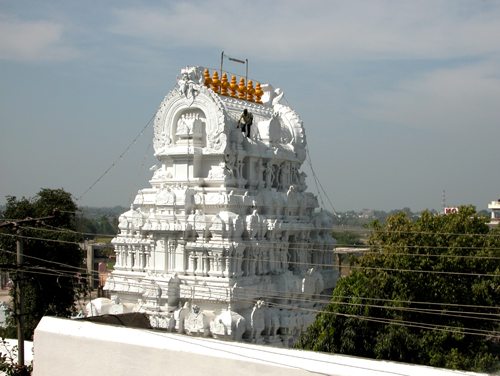
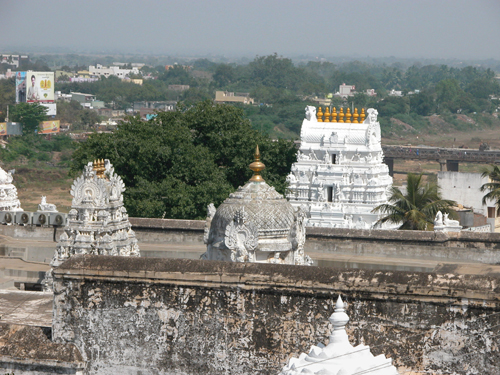
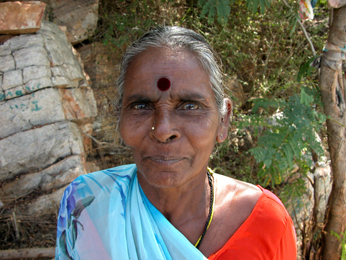 
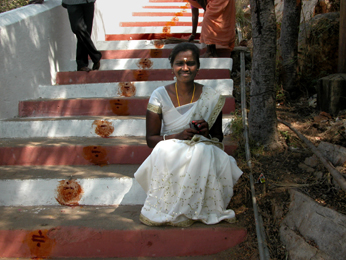 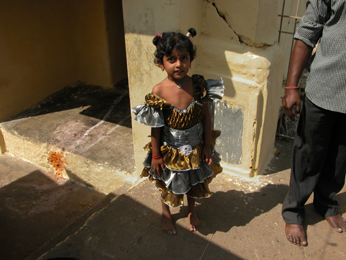
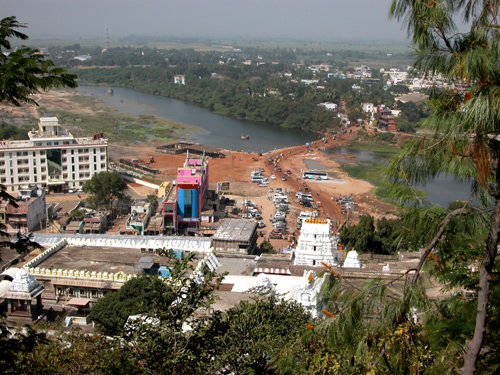
The Swarnamukhi river
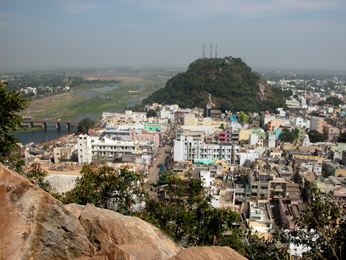 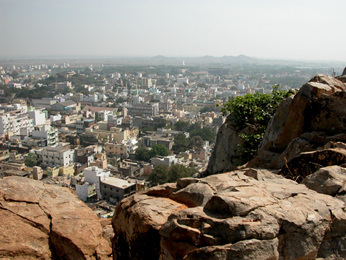
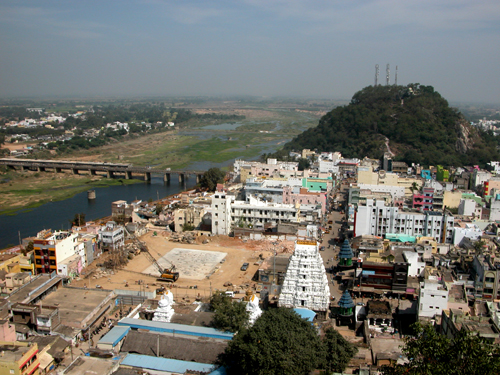
The temple complex between the two
hills
and in close proximity of the Swarnamukhi river
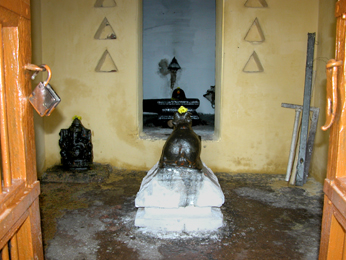 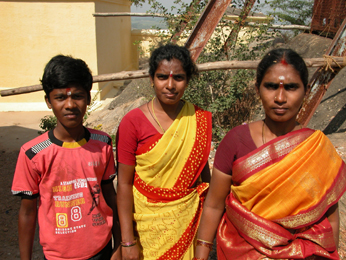
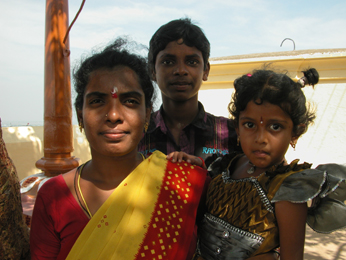 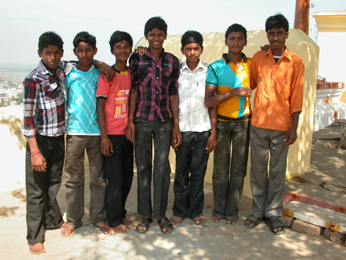
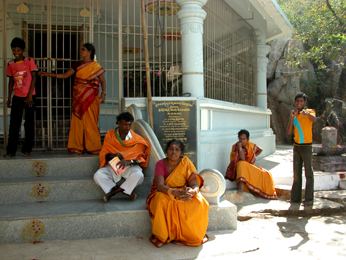 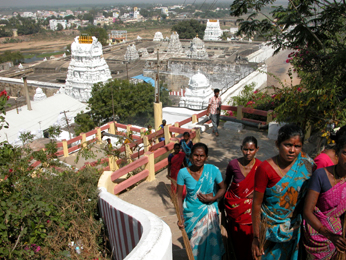
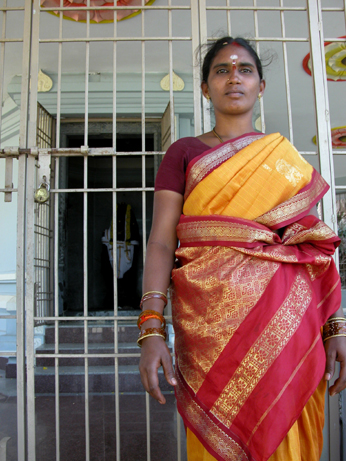
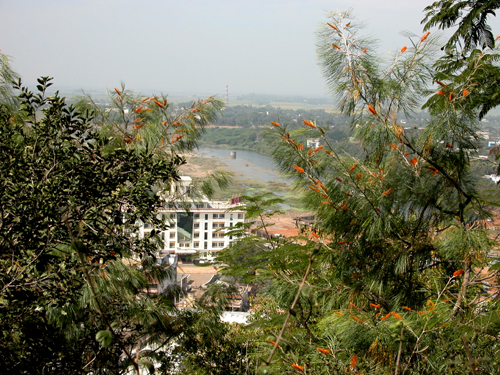
Swarnamukhi river seen through the
vegetation up hill
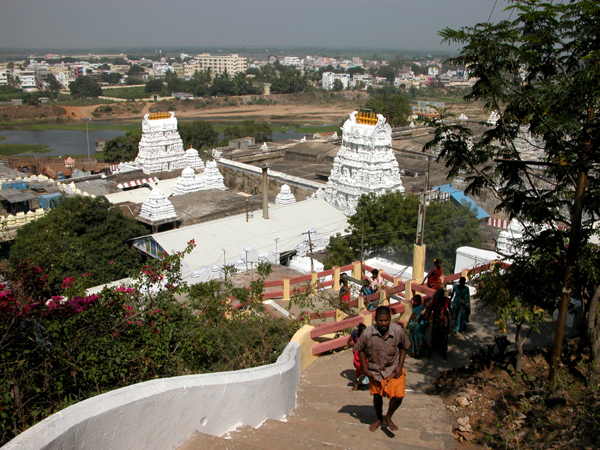
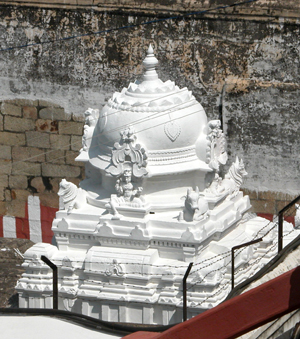
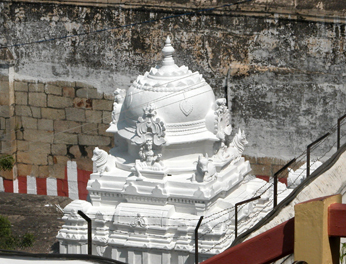 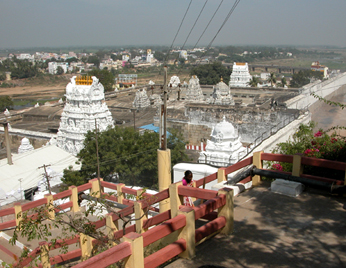
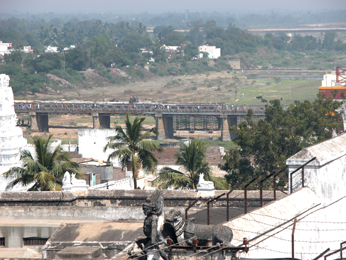 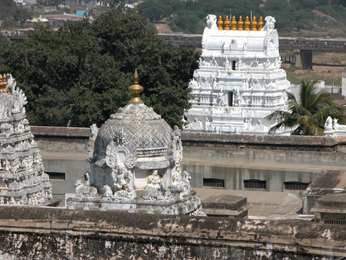
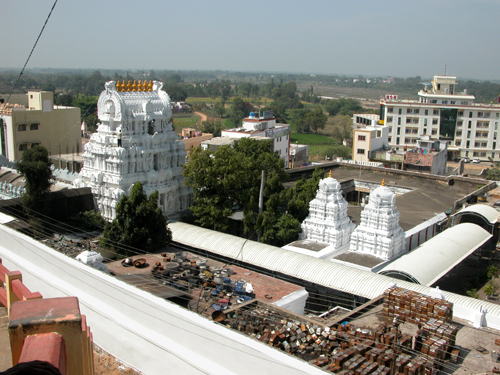
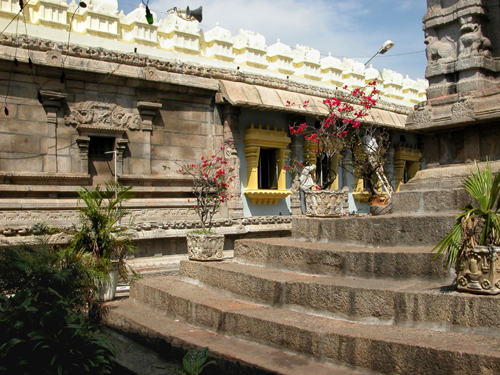
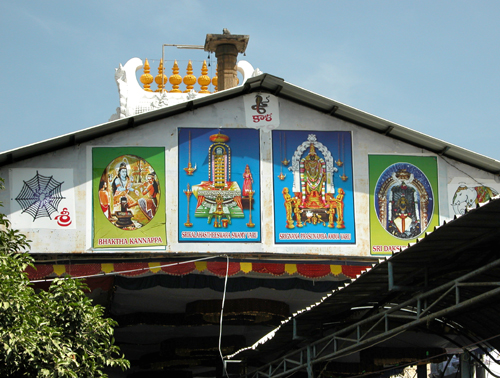 |
|
An Avadhuta in the park |
|
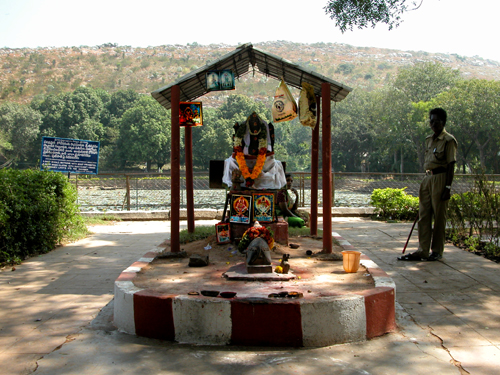
Small Shiva shrine at the entrance of
the park
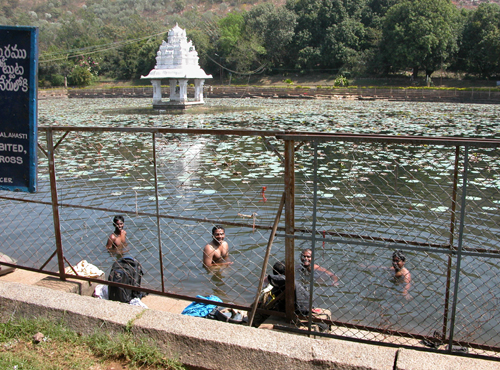
Bathing in the teerth - do not use
soap!
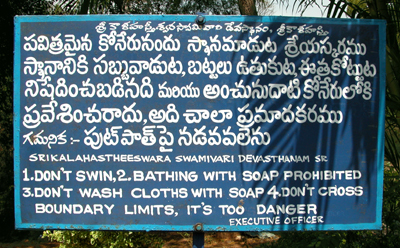
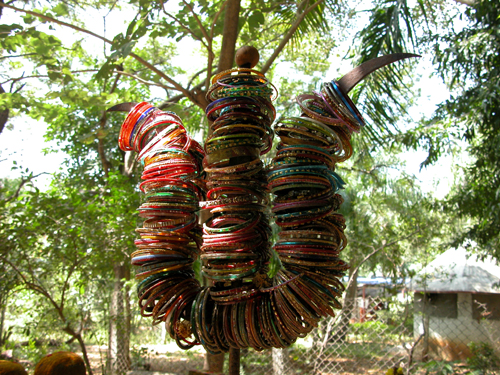
Bangle offerings adorn a Shiva Trisula
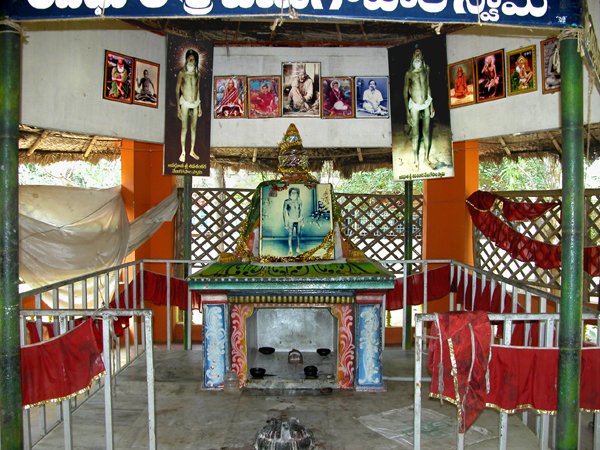
The shrine of Avadhuta Sri Sri Sri
Siva Sankara Venugopala Swamy
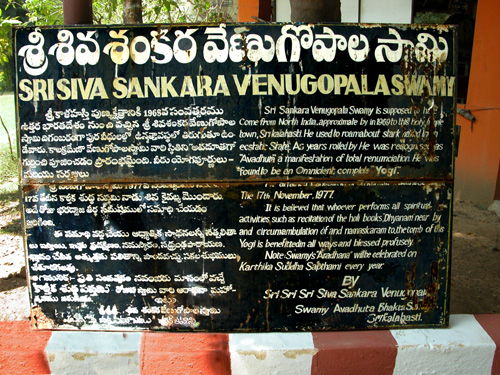
|
Sign reads:
"Sri Sankara Venugopala Swamy is supposed to have
come from North India, approximate by 1969 to this holy temple
town, Sri Kalahasti. He used to roam about stark naked in an
ecstatic state. As years roiled by He was recognised as
"Avadhuta" a manifestatation of total renunciation. He was
found to be an Omnicient complete "Yogi".
The 17th November 1977
It is believed that whoever performs all spiritual
activities such as recitation of the holy books, "Dhyanam"
(meditation) near by,
and circunambulation of and namaskaram to the tomb of this
Yogi, is benefitted in all ways and belssed profusely.
Note: Swamy's "Aradhana" will be celebrated on
Karthika Suddha Sapthami every year.
By
Sri Sri Sri Siva Sankara Venugopala
Swamy Avadhuta Bhakra Swamy
Sri Kalahasti." |
|
|
Getting there and away |
|
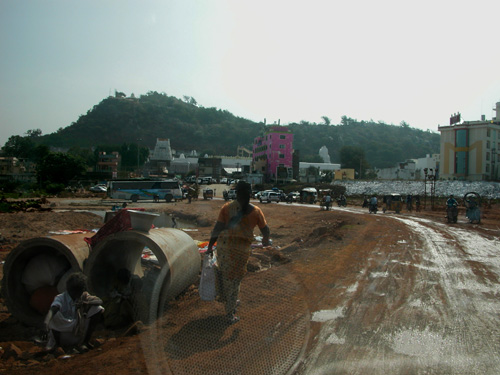
After a long journey the
first view of the temple are exhilarating!
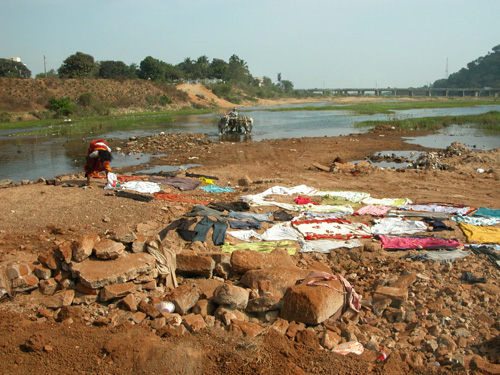
Dhobis daily life at the Swarnamukhi River
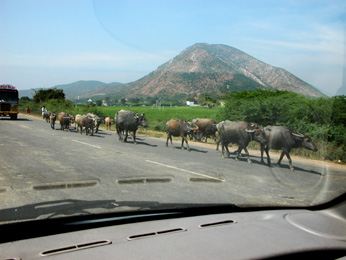 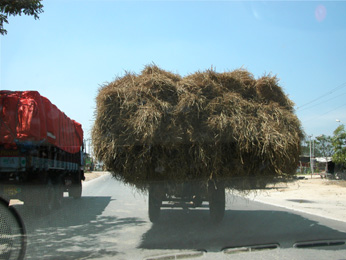
Sri Kalahasti is situated north-west of Chennai,
just 36 km from Tirupati/Tirumala
and 35km from Pulicat lake, at the seashore of the Bay of Bengal.
As an important pilgrimage place you can get there by all means of
transportation,
train, bus, taxi, foot, etc. |
|
Pilgrims on the
road to Tirumala |
|
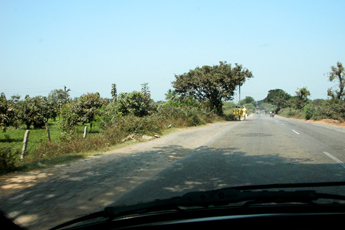 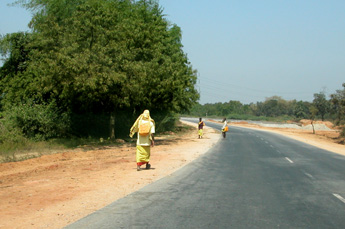
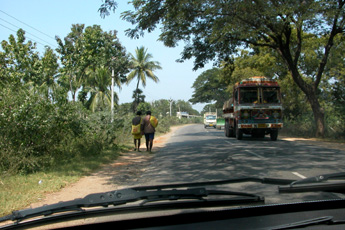 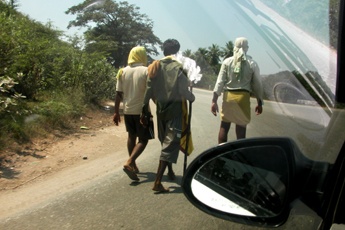
|
|
Amongst the numerous
pilgrims, several are walking on foot to the
Tirumala Balaji Temple.
On all the roads leading to the 7 hills you find pilgrims coming
from all over India and abroard. |
|
mukti4u2@gmail.com |
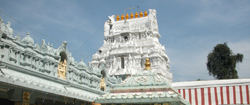 |
www.mukti4u2.dk |
mukti4u2.dk
►
created by
BP |